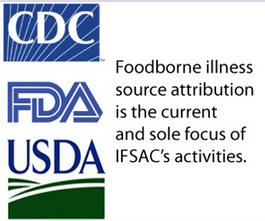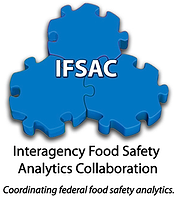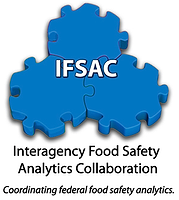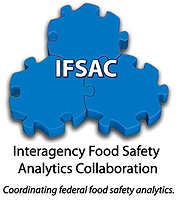There’s a new method for analyzing outbreak data to determine which foods are responsible for illness related to four major foodborne bacteria, thanks to the U.S. Food and Drug Administration, the U.S. Centers for Disease Control and Prevention, the U.S. Department of Agriculture’s Food Safety and Inspection Service.
A joint effort between the three agencies––official coined as the Interagency Food Safety Analytics Collaboration (IFSAC)––has produced a report entitled “Foodborne Illness Source Attribution Estimates for Salmonella, Escherichia coli O157 (E. coli O157), Listeria monocytogenes (Lm), and Campylobacter using Outbreak Surveillance Data”. IFSAC’s purpose is to study source attribution of foodborne illness as well as the most common food sources responsible for specific illnesses.
The report summarizes the following findings:
- More than 80 percent of E. coli O157 illnesses were attributed to beef and vegetable row crops, such as leafy vegetables.
- Salmonella illnesses were broadly attributed across food commodities, with 77 percent of illnesses related to seeded vegetables (such as tomatoes), eggs, fruits, chicken, beef, sprouts and pork.
- Nearly 75 percent of Campylobacter illnesses were attributed to dairy (66 percent) and chicken (8 percent). Most of the dairy outbreaks used in the analysis were related to raw milk or cheese produced from raw milk, such as unpasteurized queso fresco.
- More than 80 percent of Listeria illnesses were attributed to fruit (50 percent) and dairy (31 percent). Data were sparse for Listeria, and the estimate for fruit reflects the impact of a single large outbreak linked to cantaloupes in 2011.
Due to limitations in outbreak data and uncertainty in the estimates, IFSAC recommends caution in interpreting certain findings, such as the estimates for Campylobacter in dairy and Listeria in fruits. IFSAC suggests that the results be used with other scientific data for risk-based decision making.
IFSAC will describe its methods at a public meeting today in Washington, D.C., as part of the overall federal efforts to improve foodborne illness source attribution.




